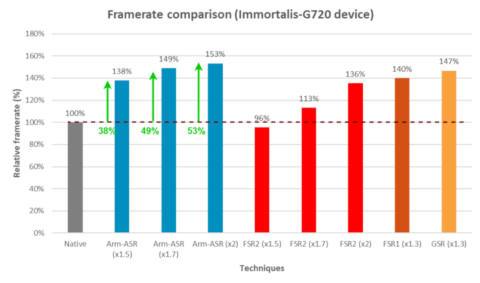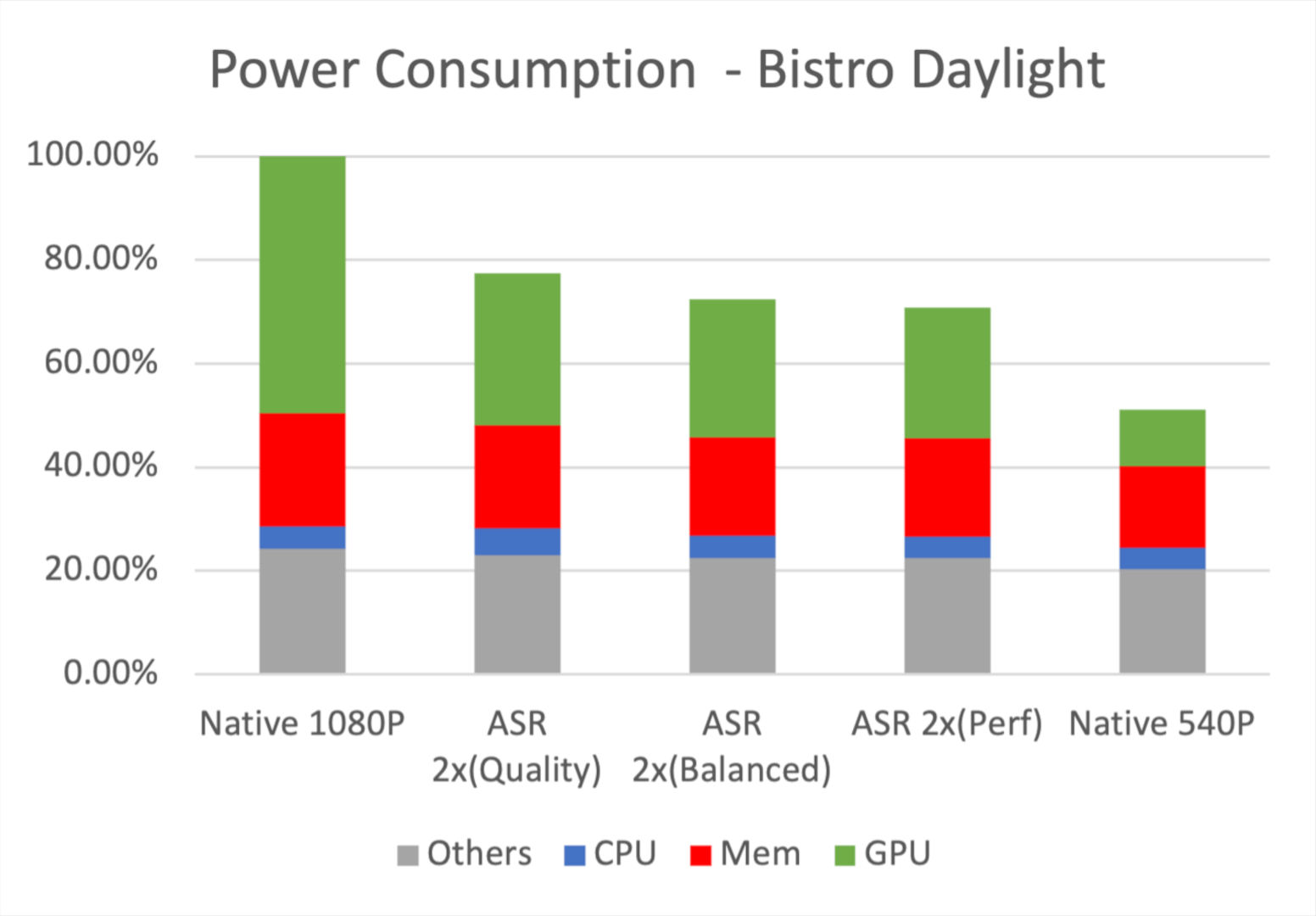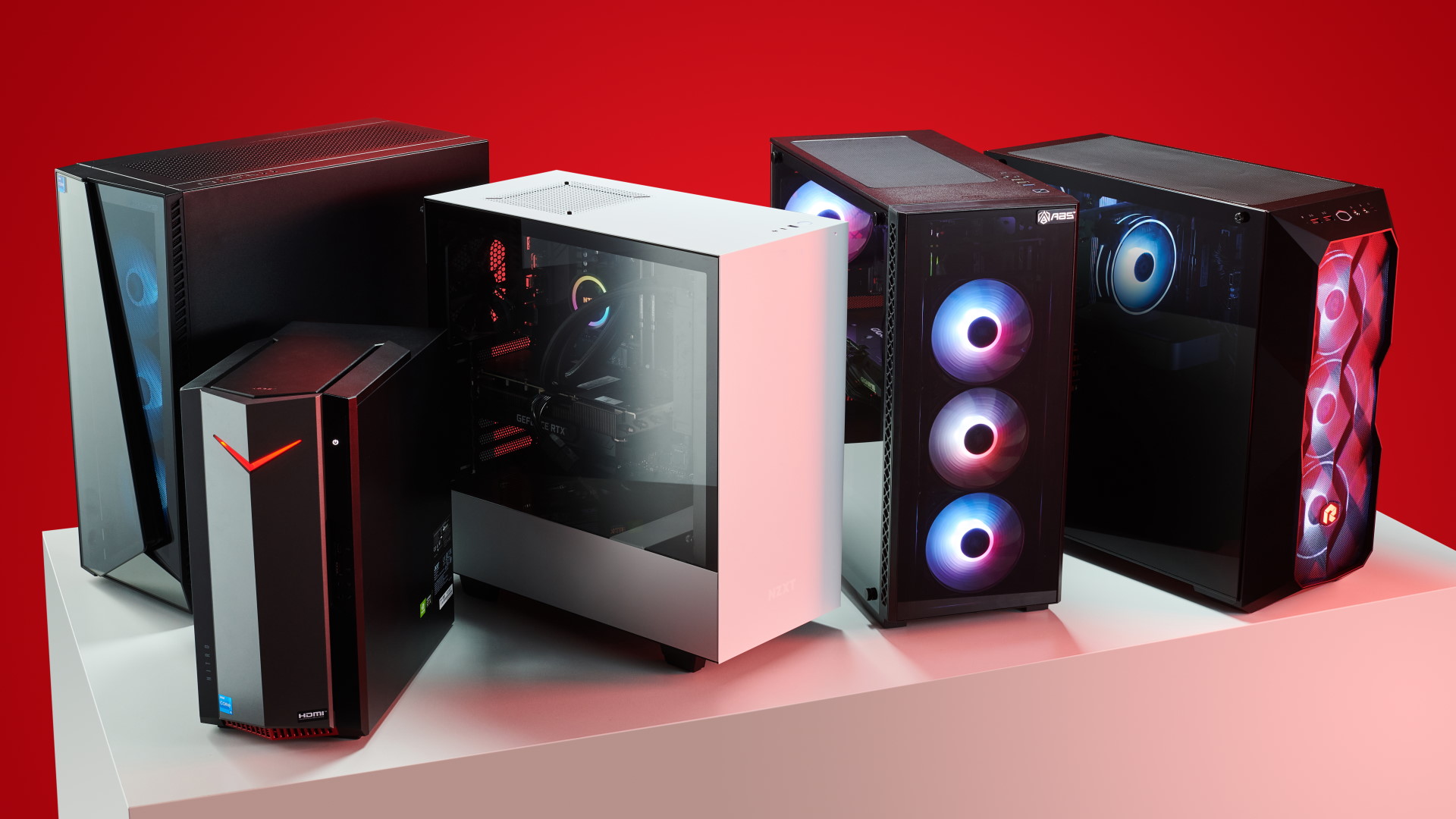Processor designer Arm has created a new shader-based upscaler for mobile devices with tiny GPUs but high-resolution screens. What makes this one different to the likes of Qualcomm's Game Super Resolution and Nvidia's DLSS Super Resolution is that it's not only open-source itself but it's also been developed from the work of another open-source project: AMD's FSR 2.2 upscaler.
For better or worse, upscaling has become an expected feature in today's graphics-heavy games. Lowering the rendering resolution significantly helps to improve performance, because there are fewer pixels to process, but at the cost of a loss in visual fidelity. Upscalers are designed to mitigate this by having most of the frame rendering done at a low resolution, then scaling it back up to the monitor's resolution, before finishing off the final touches and presenting the frame.
Game developers can choose to implement a raft of different upscaling methods—some are reliant on having a specific bit of hardware in the gaming PC (e.g. Nvidia's DLSS Super Resolution requires a GeForce RTX graphics card), while others are entirely shader-based and only require a general level of GPU features.
One of the most widely employed upscalers is AMD's FidelityFX Super Resolution (FSR) and over the years it's gone from being a basic spatial upscaler to a complex, multi-staged temporal system. Most discrete graphics cards can handle the shader routines with ease but tiny GPUs, especially those integrated into mobile devices' processors, aren't necessarily powerful enough.
To make matters worse, in the case of smartphones, those GPUs have to deal with a display that has an enormous number of pixels. Upscaling would be really useful here but if you don't have enough shader units then a complex temporal upscaler is out of the question and you're left with having to use a simple spatial one that doesn't produce nice results.
Hence why Arm has developed Arm Accuracy Super Resolution (Arm-ASR)—an upscaler that isn't as complex as those used in gaming PCs but is still temporal. Essentially, the software engineers used AMD's FSR 2.2 as its starting base, simplified some of the routines, and optimised them for Arm-based, low-power processors.
With such devices, not only are you getting more performance for a relatively small hit in graphics quality, but you're also getting a reduction in power consumption. That means less heat and a longer battery life, both of which are very welcome in mobile devices.


For me, the most important part of all of this is the fact that Arm-ASR will be released under an MIT open-source license, paving the way for game developers to perhaps implement it for handheld gaming PCs. The APUs in these machines have more potent GPUs than those in a typical smartphone but you still need to leverage upscaling to enjoy the right balance of graphics and performance in big games.
The work might also garner Qualcomm's attention for its Snapdragon X chips that currently power all Copilot+ AI PCs. These have GPUs that are purportedly a match for anything that Intel has to offer, according to Qualcomm, but the word on the street is that the reality doesn't quite match the marketing claims.

Best gaming PC: The top pre-built machines.
Best gaming laptop: Great devices for mobile gaming.
Imagine just how neat that would be: Using a Qualcomm upscaler, developed from Arm-ASR, which in turn was made from FSR.
None of this would have been possible, of course, if FSR wasn't open-source in the first place and even though it's not a system without flaws, the fact that anyone can use it and create their own systems is a major plus. We've seen coders use AMD's development kit to create mods that swap DLSS for FSR, proving once again that open-source is a great pathway to creativity and innovation.
AMD has just released an updated version of its FidelityFX SDK, sporting an improved FSR 3.1 upscaler and a fully decoupled frame generation algorithm, so it's only a matter of time before someone makes a mod that implements them in a favourite game or two. And you never know, we might just see an Arm-ASR mod for Copilot+ PCs, too.






